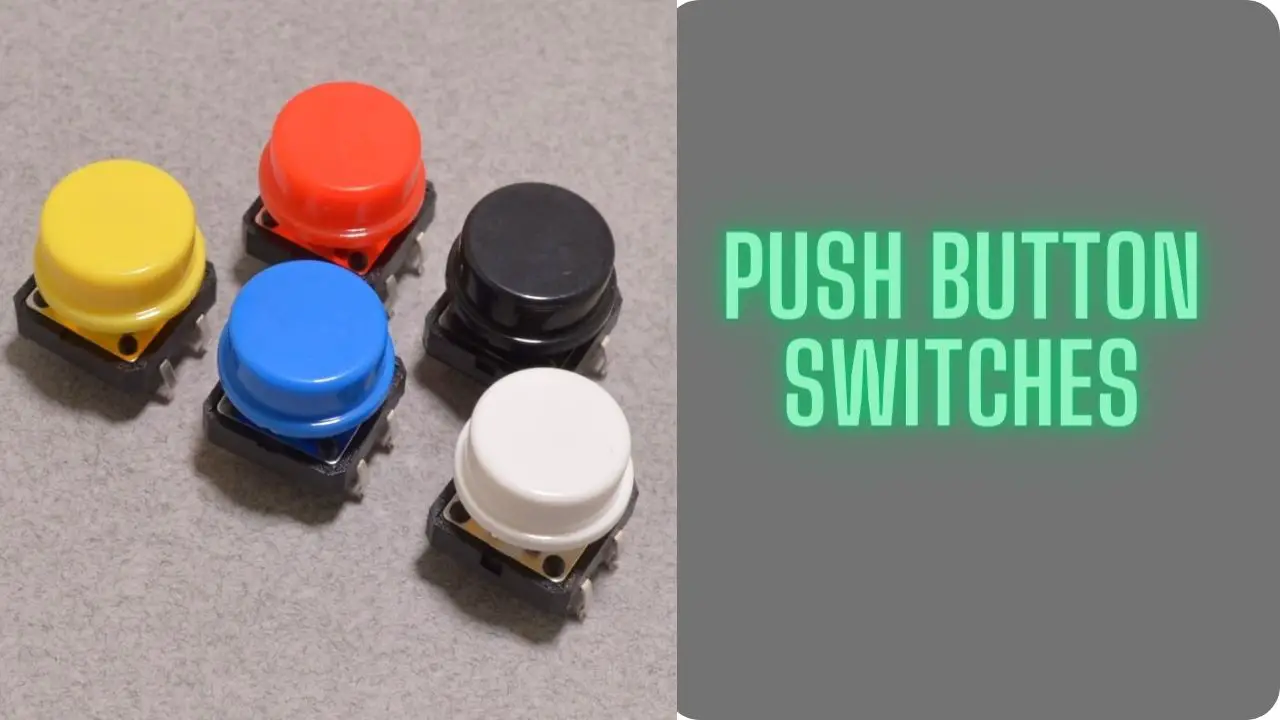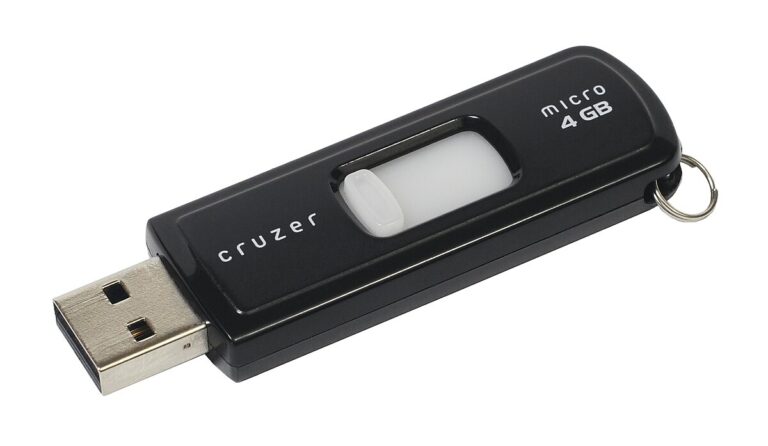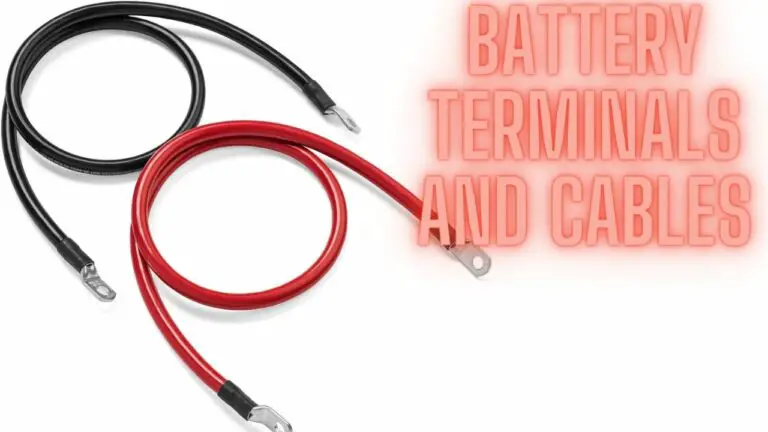Push Button Switch: A Comprehensive Overview
Introduction
Push button switches are fundamental components of electrical systems that provide a simple and convenient way to control various devices and machinery. From everyday applications to industrial settings, push button switches play a crucial role in enabling and interrupting electrical circuits. In this article, we’ll explore the features, types, applications, and benefits of push button switches.
How Does A Push Button Switch Work?
A push button switch is a simple yet essential component in electrical circuits that provides a straightforward way to open or close a circuit. It works by utilizing a mechanical mechanism to physically complete or interrupt the flow of electric current. Here’s a breakdown of how a push button switch works:
1. Components:
A push button switch typically consists of the following components:
- Button or Actuator: This is the part of the switch that you press. It’s designed to be easily pressed and provides tactile feedback when activated.
- Contacts: These are metal components within the switch that come into contact or move apart when the button is pressed. Contacts are the points where the electrical circuit is completed or interrupted.
- Terminals: These are the connection points where wires are attached to the switch. Terminals allow the switch to be connected to an electrical circuit.
- Springs (optional): Some push button switches include springs to provide the tactile feedback and return the button to its original position when released.
2. Normally Open (NO) and Normally Closed (NC) Contacts:
Push button switches can have two types of contacts:
- Normally Open (NO): In this configuration, the circuit is open (not conducting electricity) when the button is not pressed. When the button is pressed, the contacts come into contact, closing the circuit and allowing electric current to flow.
- Normally Closed (NC): In this configuration, the circuit is closed (conducting electricity) when the button is not pressed. When the button is pressed, the contacts move apart, interrupting the circuit and stopping the flow of electric current.
3. Operation:
When the button on a push button switch is pressed, it applies mechanical force to the internal components. The movement of the button causes the contacts to either come into contact (NO) or move apart (NC), depending on the type of switch. This action completes or interrupts the electrical circuit connected to the switch.
4. Momentary Action:
Most push-button switches are designed for momentary action, which means that the circuit remains closed only while the button is being pressed. As soon as you release the button, the contacts return to their original state, either open or closed, depending on the switch’s design.
5. Tactile Feedback:
The tactile feedback provided by push button switches is important for user interaction. When you press the button, you can feel a slight resistance and hear a clicking sound, indicating that the contacts have engaged. This feedback assures you that the switch has been successfully actuated.
6. Resetting:
Some push button switches, especially those used in applications like emergency stop systems, have a built-in resetting mechanism. Once pressed, these switches stay in the actuated position until manually reset. This ensures that the device or machinery doesn’t resume its operation until the system has been addressed.
Features of Push Button Switches:
Push button switches are characterized by their ease of use and the tactile feedback they provide. They typically consist of a button or actuator that, when pressed, completes or interrupts an electrical circuit. Some key features include:
- Actuation: Push button switches are activated by pressing the button, which results in a physical connection that either opens or closes the circuit.
- Tactile Feedback: The tactile sensation when pressing the button provides users with confirmation that the switch has been actuated.
- Momentary Operation: Most push button switches are designed for momentary operation, meaning they return to their original position when released. This is in contrast to toggle switches that stay in the on or off position until manually changed.
- Variety of Designs: Push button switches come in various designs, including flush, extended, illuminated, and mushroom-style buttons.
- Types of Contacts: Push button switches can have different types of contacts, such as normally open (NO) and normally closed (NC), offering flexibility in circuit configuration.
Types of Push Button Switches:
Push button switches come in different variations to meet the requirements of various applications:
- Standard Push Button Switch: These switches are simple momentary switches that open or close a circuit when the button is pressed.
- Illuminated Push Button Switch: Equipped with LED indicators, these switches are often used to indicate the status of a device or system. The LED can be illuminated when the circuit is open or closed.
- Mushroom Push Button Switch: These switches have a distinctive mushroom-shaped button that is easy to spot and press, making them suitable for emergency stop applications.
- Latching Push Button Switch: While most push button switches are momentary, latching switches remain in the position you push them until pressed again.
- Resettable Push Button Switch: These switches include a reset button that restores the switch to its original state after it’s been actuated.
Applications of Push Button Switches:
Push button switches find applications in various industries and settings, including:
- Industrial Automation: Push button switches are used in industrial control panels to start or stop machinery, initiate processes, and trigger alarms or emergency stops.
- Consumer Electronics: They are commonly found in everyday devices like remote controls, appliances, and gaming consoles.
- Automotive: In vehicles, push button switches control functions like power windows, door locks, and lighting.
- Medical Equipment: Push button switches are used in medical devices and equipment, such as patient monitoring systems and diagnostic tools.
- Security Systems: They play a role in security systems to arm and disarm alarms or control access gates.
Benefits of Push Button Switches:
- User-Friendly: Push button switches offer simple operation and clear tactile feedback.
- Reliability: Their straightforward design makes them reliable and durable in various environments.
- Versatility: Push button switches can be configured for different functions and integrated into various systems.
- Space Efficiency: Their compact design allows for efficient use of space, making them suitable for control panels and tight installations.
Installation and Wiring
For the section on “Installation and Wiring” in your document about push button switches, you might cover the following subtopics:
- Installation Guidelines:
- Proper Placement: Discuss where push button switches should be installed for optimal usability and safety.
- Mounting Surfaces: Explain the types of surfaces suitable for mounting push button switches and any considerations for different materials (e.g., metal, plastic).
- Environmental Factors: Address considerations for installing push button switches in different environments (e.g., indoor vs. outdoor, wet locations).
- Wiring Basics:
- Electrical Safety Precautions: Emphasize the importance of following safety protocols when working with electrical wiring, such as turning off power sources before installation.
- Wiring Diagrams: Provide clear diagrams illustrating how push button switches are typically wired in different configurations (e.g., single pole/single throw, single pole/double throw).
- Wire Sizing: Explain the appropriate wire gauge to use for different types of push button switches and electrical loads.
- Connection Methods:
- Screw Terminals: Describe how wires are connected to push button switches using screw terminals and provide step-by-step instructions for this method.
- Quick-Connect Terminals: Explain alternative methods for connecting wires, such as using quick-connect terminals or soldering, and highlight their advantages and limitations.
- Testing and Verification:
- Continuity Testing: Explain how to use a multimeter to verify proper wiring connections and ensure continuity between the terminals.
- Functionality Testing: Provide guidance on testing the functionality of push button switches after installation to ensure they operate correctly.
- Common Installation Issues and Solutions:
- Miswiring: Address common mistakes made during installation, such as reversing polarity or connecting wires to the wrong terminals, and provide troubleshooting tips.
- Mechanical Fitment: Discuss issues related to improper fitment or alignment of push button switches during installation and how to resolve them.
- Compliance with Standards and Regulations:
- Electrical Codes: Highlight relevant electrical codes and standards that govern the installation of push button switches, emphasizing compliance requirements.
- Local Regulations: Discuss any local regulations or building codes that may impact the installation of push button switches in specific regions.
- Special Considerations for Specific Applications:
- High Voltage Applications: Provide additional safety precautions and installation guidelines for push button switches used in high voltage applications.
- Hazardous Environments: Address specific considerations for installing push button switches in hazardous or explosive environments, such as the need for intrinsically safe designs.
By covering these subtopics, your document can provide comprehensive guidance on the installation and wiring of push button switches, ensuring that readers have the information they need to install these components safely and effectively.
Maintenance and Troubleshooting
For the section on “Maintenance and Troubleshooting” in your document about push button switches, consider including the following subtopics:
- Regular Maintenance Practices:
- Cleaning Procedures: Provide instructions for cleaning push button switches to remove dust, debris, or other contaminants that may affect their performance.
- Lubrication: Discuss the importance of lubricating moving parts, such as the actuator mechanism, to ensure smooth operation and prevent premature wear.
- Inspection Guidelines:
- Visual Inspection: Describe how to visually inspect push button switches for signs of damage, wear, or corrosion, and provide guidance on what to look for.
- Functional Testing: Explain how to perform functional tests on push button switches to ensure they are operating correctly and reliably.
- Common Issues and Solutions:
- Sticking or Jamming: Address issues related to push button switches sticking or jamming, and provide troubleshooting steps to identify and resolve the underlying causes.
- Contact Wear: Discuss how contact wear can affect the performance of push button switches and provide guidance on cleaning or replacing worn contacts.
- Actuator Problems: Identify potential issues with the actuator mechanism, such as mechanical damage or misalignment, and suggest solutions for resolving them.
- Electrical Issues: Cover common electrical problems, such as intermittent operation or failure to make proper contact, and offer troubleshooting tips for diagnosing and fixing these issues.
- Replacement Procedures:
- Component Replacement: Explain how to replace individual components of push button switches, such as contacts or actuators, if they become damaged or worn beyond repair.
- Switch Replacement: Provide step-by-step instructions for replacing entire push button switches when necessary, including proper wiring and mounting procedures.
- Preventive Maintenance Strategies:
- Scheduled Inspections: Recommend implementing a schedule for regular inspections and maintenance of push button switches to identify potential issues before they lead to failure.
- Environmental Controls: Discuss strategies for minimizing environmental factors that can contribute to the deterioration of push button switches, such as controlling humidity or temperature fluctuations.
- Safety Considerations:
- Electrical Safety: Emphasize the importance of following safety protocols, such as de-energizing circuits before performing maintenance or troubleshooting on push button switches.
- Personal Protective Equipment (PPE): Recommend using appropriate PPE, such as insulated gloves or safety glasses, when working with electrical components.
- Documentation and Record-Keeping:
- Maintenance Logs: Encourage keeping detailed records of maintenance activities, including inspection dates, repairs performed, and any replacement parts used, to track the health of push button switches over time.
By covering these subtopics, your document can provide valuable guidance on maintaining and troubleshooting push button switches, helping readers maximize their lifespan and reliability while minimizing downtime and costly repairs.
Safety Considerations
- Electrical Safety:
- Power Off: Emphasize the importance of turning off the power supply before installing, wiring, or performing maintenance on push button switches to prevent electrical shocks or hazards.
- Lockout/Tagout: Recommend following lockout/tagout procedures to ensure that electrical circuits are de-energized and safely isolated before any work begins.
- Insulation: Advise using insulated tools and equipment when working on electrical components to minimize the risk of electric shock.
- Grounding: Stress the importance of proper grounding to prevent electrical hazards and ensure the safe operation of push button switches.
- Personal Protective Equipment (PPE):
- Insulated Gloves: Encourage wearing insulated gloves to protect against electrical shock when handling wires or terminals.
- Safety Glasses: Recommend wearing safety glasses to prevent eye injuries from flying debris or accidental contact with electrical components.
- Protective Clothing: Suggest wearing appropriate clothing, such as long sleeves and pants, to reduce the risk of burns or injuries from electrical arcs or sparks.
- Environmental Safety:
- Temperature: Discuss the temperature rating of push button switches and recommend selecting switches suitable for the operating environment to prevent overheating or malfunction.
- Moisture and Dust: Address the ingress protection (IP) rating of push button switches and advise choosing switches with adequate protection against moisture, dust, and other contaminants, especially for outdoor or industrial applications.
- Chemical Exposure: Warn against exposing push button switches to corrosive chemicals or solvents that could damage the components or affect their performance.
- Installation Safety:
- Secure Mounting: Stress the importance of securely mounting push button switches to prevent them from coming loose or falling during operation, which could pose a safety hazard.
- Proper Wiring: Emphasize the need for correct wiring according to manufacturer instructions and electrical codes to prevent short circuits, overloads, or other electrical hazards.
- Clear Labeling: Recommend clearly labeling push button switches and associated wiring to facilitate troubleshooting and maintenance while reducing the risk of errors or accidental contact with live circuits.
- Maintenance Safety:
- Scheduled Inspections: Encourage regular inspections and maintenance of push button switches to identify and address potential safety hazards, such as loose connections, worn components, or signs of damage.
- Training and Awareness: Stress the importance of providing adequate training to personnel responsible for installing, operating, or maintaining push button switches to ensure they are aware of safety protocols and best practices.
- Emergency Procedures:
- Emergency Shutdown: Provide instructions for emergency shutdown procedures in case of electrical faults, fires, or other safety incidents involving push button switches.
- Emergency Response: Outline emergency response protocols, including how to administer first aid and contact emergency services in the event of an electrical accident or injury.
By covering these safety considerations in your document, you can help ensure that users understand the potential hazards associated with push button switches and are equipped with the knowledge and resources to mitigate risks and maintain a safe working environment.
Future Trends in Push Button Switch Technology
- Smart Switches:
- Integration with IoT: Discuss how push button switches are being integrated into Internet of Things (IoT) ecosystems, allowing for remote monitoring, control, and automation of devices and systems.
- Wireless Connectivity: Explore the adoption of wireless communication protocols such as Bluetooth Low Energy (BLE) or Wi-Fi, enabling seamless connectivity and interoperability with smart home platforms and mobile devices.
- Sensor Integration: Highlight the incorporation of sensors, such as proximity sensors or ambient light sensors, into push button switches to enable intelligent, context-aware functionality.
- Advanced Materials and Manufacturing Techniques:
- Miniaturization: Explore advancements in miniaturization techniques and materials, resulting in smaller, more compact push button switches suitable for space-constrained applications such as wearable devices or IoT sensors.
- Flexible and Printed Electronics: Discuss the use of flexible substrates and printed electronics technology to create conformable, customizable push button switches that can be integrated into curved or irregular surfaces.
- Haptic Feedback and User Interface Design:
- Tactile Feedback: Investigate the integration of haptic feedback mechanisms into push button switches, providing users with tactile sensations to enhance the user experience and improve usability, particularly in touchscreen or virtual interface applications.
- Multifunctionality: Explore the development of multifunctional push button switches capable of dynamically adapting their functionality based on user input, context, or predefined settings.
- Energy Efficiency and Sustainability:
- Low-Power Design: Discuss efforts to optimize the energy efficiency of push button switches, enabling longer battery life in battery-powered devices and reducing overall energy consumption.
- Recyclable Materials: Explore the use of eco-friendly materials and designs that prioritize recyclability and minimize environmental impact throughout the lifecycle of push button switches.
- Enhanced Durability and Reliability:
- Sealed and Ruggedized Designs: Highlight advancements in sealing techniques and ruggedized designs that enhance the durability and reliability of push button switches, making them suitable for harsh environments such as industrial automation or outdoor applications.
- Longer Lifespan: Discuss improvements in materials and engineering that extend the operational lifespan of push button switches, reducing the frequency of maintenance and replacement cycles.
- Integration with Emerging Technologies:
- Augmented Reality (AR) and Virtual Reality (VR): Explore how push button switches are being integrated into AR/VR interfaces and immersive experiences, enabling intuitive interaction and control in virtual environments.
- Artificial Intelligence (AI): Discuss potential applications of AI algorithms and machine learning techniques in optimizing the performance, reliability, and usability of push button switches through predictive maintenance, adaptive control, or user behavior analysis.
Push Button Switch: Frequently Asked Questions
What is a push button switch used for?
Push button switches are used to control the flow of electric current in a circuit. They are commonly used to start and stop machines, activate alarms, control lights, and perform various functions in consumer electronics, industrial automation, and more.
How does a momentary push button switch work?
A momentary push button switch works by completing an electrical circuit when the button is pressed and breaking the circuit when the button is released. It returns to its original state when released, making it suitable for temporary actions like turning on a light or starting a motor.
What is the difference between a normally open (NO) and normally closed (NC) push button switch?
In a normally open (NO) switch, the circuit is open (no current flows) when the button is not pressed. When the button is pressed, the circuit closes, allowing current to flow. In a normally closed (NC) switch, the circuit is closed when the button is not pressed. Pressing the button opens the circuit.
Are push button switches waterproof?
Push button switches come in various levels of protection against environmental factors like water and dust. Some are designed to be waterproof or water-resistant, making them suitable for outdoor or damp environments. Look for switches with IP ratings indicating their level of protection.
Can I use a push button switch to replace a toggle switch?
In some cases, yes. Push button switches are often used for momentary operations, while toggle switches are used for maintaining a position (on or off). If you need to replace a toggle switch with a push button switch, consider the functionality you require and the type of operation you want.
Are illuminated push button switches energy-efficient?
Illuminated push button switches with LED indicators are generally energy-efficient. LEDs consume less power compared to traditional incandescent bulbs, making illuminated push button switches a suitable choice for applications where energy efficiency is a concern.
Can I use a push button switch for an emergency stop function?
Yes, some push button switches are designed specifically for emergency stop functions. These switches are often mushroom-shaped and have a latching mechanism to ensure that the circuit remains interrupted until manually reset.
How do I wire a push button switch?
Wiring a push button switch depends on its type (NO or NC) and the specific application. Generally, one terminal of the switch is connected to the power source, and the other terminal is connected to the load (device or appliance). Consult the manufacturer’s instructions or seek professional assistance for proper wiring.
Can I customize the appearance of push button switches?
Yes, many push button switches come with customizable options, including button color, shape, and labeling. This customization allows you to match the switch to the aesthetics and functionality of your application.
Are push button switches durable?
Push button switches are designed to be durable and withstand repeated use. However, the durability can vary based on the quality of the switch and the manufacturer. High-quality switches are made to endure frequent actuation and harsh environments.
Conclusion
In conclusion, push button switches are essential components in electrical systems, providing a user-friendly and efficient way to control devices and machinery. From industrial automation to consumer electronics, their versatility and reliability make them integral to modern technology and daily life.








